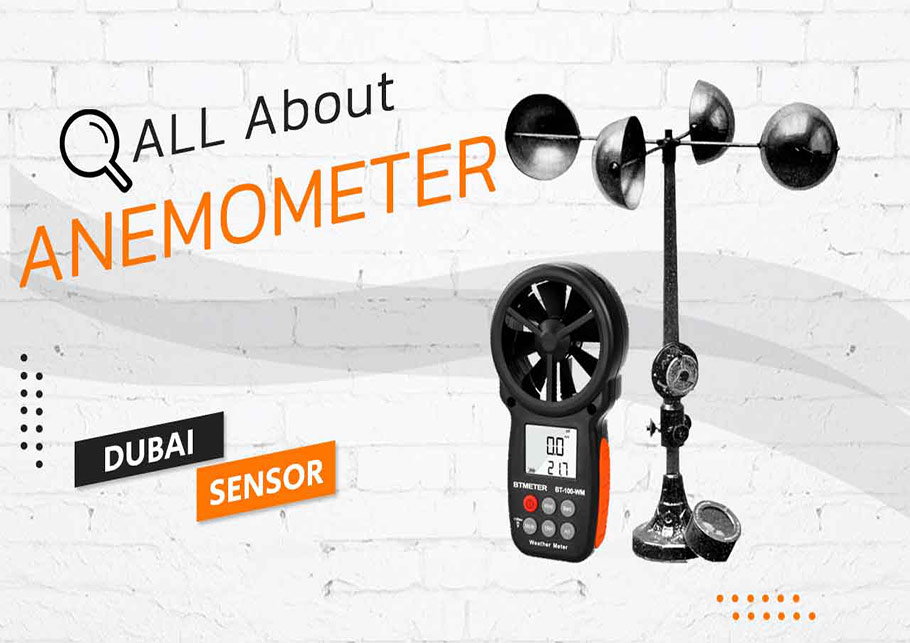How to Preserve and Care for Your Anemometer to Make Sure Longevity
How to Preserve and Care for Your Anemometer to Make Sure Longevity
Blog Article
Discovering the Features and Advantages of Anemometers for Climate Fanatics and Professionals
Anemometers stand as critical tools in the realm of weather tracking, accommodating both fanatics and experienced experts alike. These gadgets offer a home window right into the vibrant globe of wind patterns and speeds, giving important information for meteorological analysis and forecasting. From mug anemometers to sonic anemometers, each kind brings its distinct collection of applications and benefits, shedding light on different aspects of weather. As we explore the functions and advantages of anemometers, a much deeper understanding emerges not only of prevailing weather phenomena but likewise of the wider effects for sectors like wind energy manufacturing and environmental research study.
Value of Anemometers in Weather Condition Tracking
Anemometers play a crucial function in weather tracking by providing exact measurements of wind speed, aiding in projecting and understanding climate patterns. These instruments, ranging from traditional mug anemometers to modern-day ultrasonic anemometers, are vital for meteorologists, scientists, and weather enthusiasts alike.

Kinds Of Anemometers and Their Applications
The most common kinds of anemometers include mug anemometers, vane anemometers, hot-wire anemometers, and ultrasonic anemometers. Mug anemometers consist of three or four mugs installed on straight arms that turn with the wind, gauging its speed. Vane anemometers, on the other hand, utilize an openly rotating vane to straighten with the wind instructions, supplying both wind speed and instructions dimensions.
Each sort of anemometer has its one-of-a-kind advantages and applications. Cup anemometers are durable and suitable for basic climate monitoring, while vane anemometers are preferred for directional measurements. Hot-wire anemometers are delicate to low air speeds, making them perfect for interior settings. Ultrasonic anemometers are non-intrusive and use high precision, frequently used in research and specialized weather surveillance applications. Understanding the features and applications of each kind of anemometer is critical for picking one of the most proper tool for specific weather keeping track of demands.
Benefits of Utilizing Anemometers in Forecasting
In meteorology, the utilization of anemometers provides important advantages for boosting the precision of climate forecasting. Anemometers determine wind speed and instructions, offering essential information for predicting climate patterns. By including wind data into projecting versions, meteorologists can better recognize the movement of weather condition systems, expect modifications in weather, and problem extra accurate forecasts.
Furthermore, anemometers play an important function in evaluating prospective climate hazards. Checking wind rates aids forecasters forecast severe weather events such as hurricanes, tornadoes, and winter season tornados with greater accuracy. This early caution system enables authorities to release timely notifies and implement needed precaution, reducing the threats to life and residential or commercial property.
Furthermore, anemometers assist in optimizing sustainable power manufacturing. By assessing wind patterns, meteorologists can identify ideal places for wind farms and forecast energy outcome, adding to the effective generation of wind power.

Anemometers in Wind Power Production
Provided the essential role anemometers play in supplying exact wind data for climate projecting and danger analysis, their relevance reaches the world of wind energy manufacturing. Anemometers are necessary instruments in the area of wind power, where the dimension of wind speed and direction is important for determining the feasibility and effectiveness of wind generator setups. By properly determining wind speeds at varying heights, anemometers help maximize the placement and design of wind generators to maximize power outcome.
In wind ranches, anemometers are tactically positioned to collect real-time wind information that is utilized to examine the prospective power manufacturing of a website. This information is crucial in identifying the financial practicality of wind power projects and in forecasting energy generation to make certain grid security. Additionally, anemometers aid in monitoring wind problems to maximize wind turbine performance, stop damages from high winds, and make sure the safety and security of employees functioning in the vicinity of wind generators.
Enhancing Climate Comprehending With Anemometers

Anemometers play a vital function in enhancing our understanding of microclimates. These local weather can differ considerably from more comprehensive regional projections, making it necessary to have accurate data for certain areas. anemometer. By tactically positioning anemometers in different locations, researchers can gather comprehensive information on how wind acts in various terrains, have a peek at this website city settings, or bodies of water
Furthermore, anemometers contribute to improving weather forecasting versions by supplying real-time data on wind habits. This information is particularly useful for anticipating serious weather events, enhancing agricultural techniques, and supporting sectors like air travel and maritime navigating. Overall, anemometers are vital instruments that allow us to dig much deeper right into the complexities of weather systems, ultimately bring about more better-informed decisions and exact forecasts.
Conclusion
In conclusion, anemometers play an important role in climate monitoring and projecting by determining wind speed and instructions. Anemometers likewise have applications in wind power production, further highlighting their relevance in both meteorology and renewable power markets.
From mug anemometers to sonic anemometers, each type brings its unique set of applications and benefits, dropping light on various elements of climatic problems. These tools, ranging from standard cup anemometers to contemporary ultrasonic anemometers, are crucial for meteorologists, researchers, and climate fanatics alike. The most typical kinds of anemometers consist of mug anemometers, vane anemometers, hot-wire anemometers, and ultrasonic anemometers. Mug anemometers are robust and appropriate for basic weather monitoring, while vane anemometers are favored for directional measurements. Anemometers are crucial tools in the area of wind energy, where the measurement of wind speed and instructions is crucial for identifying the feasibility and Continued efficiency of wind generator setups.
Report this page